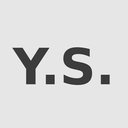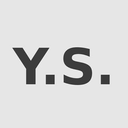Lessons from a BI False Start — Culture, Change, and the Real Road to Transformation | BI導入でつまずいた理由──見えなかった「文化」と「使われない現実」
Photo by Kind and Curious on Unsplash
What Was Our First BI Failure?
How Power BI Hit Resistance Before It Even Started
"Let’s drive visibility across the company with Power BI."
That was our vision — but our very first step revealed unexpected pitfalls.
It started with “Excel limits” and an exec’s impulse
For years, we’d been using an Excel add-on BI tool.
It rendered outputs as pivot tables, but:
- It couldn’t handle more than 1,048,576 rows
- Only a small portion of employees could actually use it
Roughly 20% of users could manipulate the data, another 30% could view it.
The remaining 50% — including our executives — had no idea how to operate it.
Then came a turning point:
One of our execs responded to a Salesforce marketing email and asked our IT team to consider adopting a new SFA (Sales Force Automation) platform.
The issue?
It was far too expensive. As a compromise, the vendor pitched Tableau instead.
Flashy dashboards vs. frontline realities
The Tableau trial certainly looked impressive.
Some managers were wowed by the visuals. But in the end, leadership concluded it wasn’t worth the cost.
That’s when I stepped in and recreated a similar dashboard using Power BI.
The response:
"This is more than enough!" said the execs.
However, when I proposed deploying the browser-based paid version, it was immediately rejected.
The tool was limited to local use via Power BI Desktop, and only within the IT department.
Fighting Excel loyalty and “table-only” thinking
Soon, we faced strong internal resistance.
Employees who were used to the old tool said,
"If it's not a pivot table, I can’t work with it."
Worse yet, some execs with intermediate Excel skills weren’t impressed by the new UI:
"I don’t like these charts. I just want to see the numbers."
"I feel more comfortable with rows and rows of plain data — like a phone book."
Instead of being a value-add, visual dashboards were seen as “unreadable”.
Smooth dashboards, cold reactions
I built a Power BI dashboard that visualized 10 million+ rows and used it in a live demo.
Younger team members were excited.
But leadership?
They responded with:
"If only a few people can use it, it’s meaningless. We won’t expand this company-wide."
That statement undermined momentum.
Power BI remained a tool used only within the IT team.
What I’d do differently now
If I could go back, I’d start with the field leaders — branch managers and other influential frontline staff.
I now know:
Top-down initiatives often stall at the top.
True change needs bottom-up traction.
It’s not about flash.
It’s about making tools that people actually use.
Looking back, I realize the real obstacle wasn’t the tool.
It was our internal mindset and culture — and that’s always the hardest thing to change.
BIツール導入、最初の“つまずき”は何だったか?
Power BIを導入して社内の見える化を進めよう。
——そんな想いで踏み出した第一歩は、意外なところに“落とし穴”がありました。
きっかけは「Excelの限界」と「役員の一声」
当社では以前からExcelアドオン型のBIツールを使ってデータ集計を行っていました。出力結果はピボットテーブルで表現されるものの、
- 104万行の制限
- 操作できる人がごく一部のみ
という大きな壁がありました。
操作に慣れている社員は全体の2割、参照だけの社員が3割、残り5割は全く触れず。もちろん、役員もその5割に含まれていました。
そんな中、SalesforceからのDMに反応した役員が、営業支援システム(SFA)の導入を情シスに検討させることに。
しかし、SFAは高額すぎて現実的ではなく、代替案としてTableauの導入提案が浮上します。
「派手なダッシュボード」と「現場目線」とのギャップ
Tableauのトライアルは、確かに華やかでした。
一部の管理職は「これすごいな」と反応しましたが、最終的に費用対効果が見合わないという判断で導入は見送りに。
そのタイミングで私がPower BIで似たようなダッシュボードを再現したところ、役員から「これで十分やん!」とのリアクション。
ただし、有料版(ブラウザ共有機能)の導入は却下され、Power BI Desktopでのローカル利用に限定されてしまいました。
“Excel信者”と“テーブル信仰”の壁
旧BIツールに慣れた一部社員からは「ピボットじゃないと無理」と反発が。
さらに、中途半端にExcelが得意な役員たちからも難色が…。
「グラフとか見にくい。数字がダーッと並んでる方がええ」
「電話帳みたいな表の方が安心する」
…と、グラフィカルなUIはむしろ“見づらい”存在として拒絶されました。
ヌルヌル動くダッシュボード vs 現場の冷ややかさ
私は1000万行超のデータをPower BIで可視化し、ダッシュボードを“ぬるぬる動かす”プレゼンを実施。
若手社員からは高評価を得ましたが、役員の反応は冷ややか。
「一部だけが使うなら意味がない。会社としては広げない。」
その言葉でやる気が失速し、Power BIは情シス内での活用にとどまりました。
今ならこうする:「現場の力」を先に借りるべきだった
今ならこう言えます。
現場のキーマン(営業課長など)を先に巻き込むべきだった。
「トップダウンで始まり、トップの違和感で止まる」
——それでは何も変わらない。
派手さではなく、現場で“使えること”こそが正義。
BI導入の最大の壁は、ツールそのものではなく、**社内の“見方”と“文化”**だったのかもしれません。



